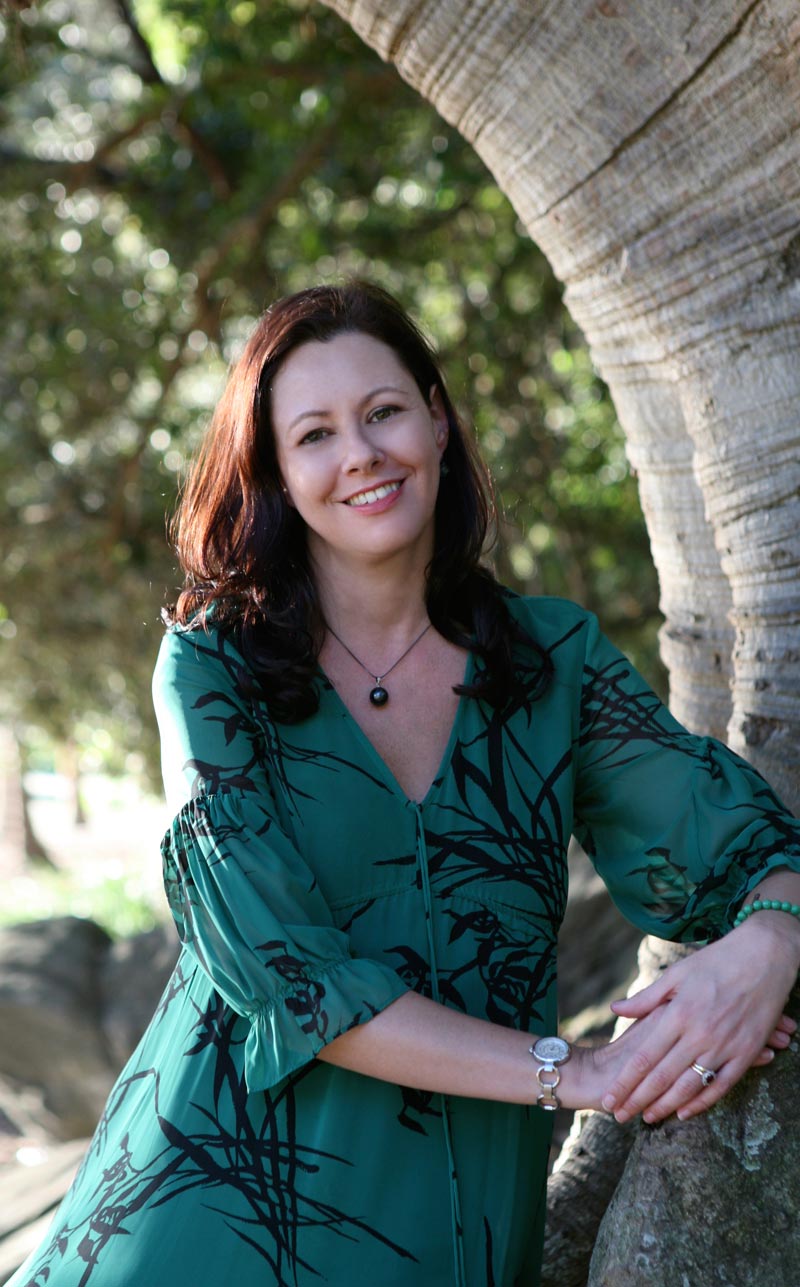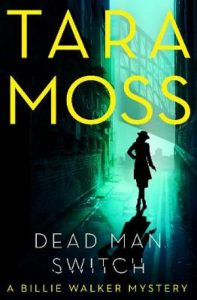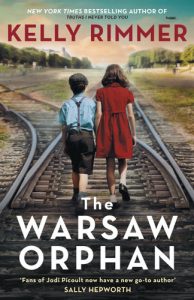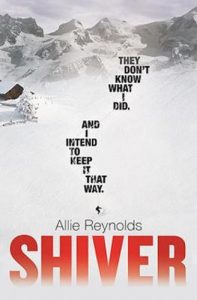
Kate Forsyth is one of Australia’s most treasured storytellers. On today’s edition of What Katie Read, she gives us the rundown on all of the best books she’s been reading lately …
Bila Yarrudhanggalangdhuray
by Anita Heiss
Anita Heiss’s new book is set along the banks of the Murrumbidgee River in the 1850s, and tells the story of a young Aboriginal woman named Waghadhaany (pronounced Wog-a-dine). The title means ‘River of Dreams’ in the Wiradjuri language of southern-central NSW – the river and its landscape and place in the lives of the local Indigenous people are central to this engrossing tale of love and loss, grief and gratitude, language and listening.
The story begins in 1838 when Waghadhaany is only a child, and her father warns a white settler not to build too close to the river, as it floods in the rains and becomes a powerful and dangerous force that sweeps away all in its path. The white man scoffs at him and takes no notice. Wagadhaany askes her father why she does not tell him that the river’s name, Marrambidya, means ‘big flood, big water’. He answers, ‘no matter what you say, or how many times you say it, ngamurr, some people, especially White people, they just won’t listen.’
Fourteen years later, the township of Gundagai was hit by a massive flood as the river broke its banks after a month of heavy rain. Almost one-third of the town’s population died in what was then Australia’s worst flood disaster. Many of the survivors were rescued by the local indigenous people, including Wagadhaany’s father. The man he warned, however, dies.
The idea of listening is central to the novel. Wagadhaany must learn the language of her white employers, but they do not learn hers. They call her Wilma because they cannot be bothered to learn how to pronounce her name. Much of the wisdom of the Wiradjuri people is transmitted orally, through song and story. Yet Wagadhaany is taken away from her people and her country, and this loss wounds her. She is kept silent.
In one scene, she visits another camp and realises: ‘she’s had no conversation since leaving Gundagai. No language, no stories, no dancing, no sharing. She wonders how she can still live without so much that is important to her. She looks around the circle where the women are weaving and knows they must all be listening, because no-one else is talking.’ To find herself once more among her own kind hits Wagadhaany hard: ‘These women could be her gunhi, her grandmother, aunties and cousins. These could be her miyagan. She remembers the words of her own gunhi the last time she saw her. You will always have miyagan around this country, your Wiradjuri country … the Ancestors will be with you wherever you walk.’
The simplicity and naivety of the language is a perfect expression of Wagadhaany’s voice. Although she uses many Wiradjuri words, their meaning is always clear in the context of the story, and Anita provides a glossary at the back of the book just in case. I really loved this use of the Wiradjuri language throughout the story – it’s a paean to an ancient culture steeped in myth and song and storytelling.
The loss of language, the loss of country, is the force which drives Wagadhaany as she grows up, makes friends, falls in love, and becomes a mother. Eventually, this force compels her to break free of her servitude to her white employers and she walks home, following the snaking course of the river of dreams. The novel flows like the great Murrumbidgee River itself, with powerful undercurrents that sweep the reader along.
The book is written with great delicacy and compassion. Wagadhaany grows from a girl filled with bewilderment and grief at the disruption of her world to a young woman of certainty and strength. Wagadhaany makes friends with a young Quaker woman named Louisa who tries to listen and understand, though her attempts to help are sometimes tone-deaf. It’s so incredible to hear the story of Australia’s colonial past in the voice of an Indigenous woman. It really illuminated our past for me, and taught me so much about a way of life that has sadly been largely lost. I feel Bila Yarrudhanggalangdhuray is a book that all Australians should read, to try and understand why our colonial past still causes so much pain and grievance.
Buy it here
Dead Man Switch
by Tara Moss
Billie Walker is a former war correspondent who is trying to rebuild her life back in 1940s Sydney after the death of her husband. She has taken over her father’s private investigation bureau, and is making her living tailing cheating husbands and wives. One day a woman comes to her in desperate need. Her son has gone missing, and she wants Billie to find him. The case is a lot more complex and dangerous than Billie had imagined, and leads her both into Sydney’s high society and its grimy underworld. The action is fast-paced, and full of vivid period detail that really brings post-war Australia to life. Tara Moss loves 1940s style, and makes her own clothes, and this knowledge of the fashion of the times added an intriguing thread to Billie’s character. Plus there’s the subtle possibility of a romance developing with the detective also working the case, which adds a pleasant frisson of intrigue. The story is really cinematic – in fact, it’s crying out for a glamorous TV series in the style of Miss Fisher’s Murder Mysteries. I really hope someone makes it!
Buy it here
The Warsaw Orphan
by Kelly Rimmer
I’m a big fan of Kelly Rimmer – she has a warm, intimate writing style that just flows beautifully. This book is set in Warsaw during the war years, a time and place I have always been interested in (I have actually written a story that draws upon the same setting, called ‘The Blessing’, which was published in The Silver Well, a collection of stories co-written with Kim Wilkins). The narrative is told from two first-person points-of-view. The first is Roman Gorka, a Jewish teenager locked up in the Warsaw ghetto with his family. The second is Elzbieta Rabinek, a girl who wonders sometimes what lies beyond the high walls of the ghetto. When she makes friends with her neighbour, a nurse who works secretly to save children from the ghetto, she is drawn into the dangerous world of the underworld resistance to the Nazi occupiers. The story follows their struggles to survive, the forced evacuations, the famous ghetto uprising, the later battle to liberate Warsaw from the German occupation and the infamous Soviet invasion. It’s a heart-rending struggle, and brought me to tears more than once. What I loved most about The Warsaw Orphan is how real it was – the story of two young people struggling to survive in a world gone mad, fighting hate, injustice and tyranny, and their own conflicted emotions, trying to discover how to build a life in the ashes of a terrible war. A truly beautiful book.
Buy it here
Shiver
by Allie Reynold
I’m reading a lot of murder mysteries right now, and this was recommended to me by Dervla McTiernan who is one of my favourite contemporary crime novelists. Shiver is set at a ski resort high in the French Alps, during the low season when the resort is shut. A group of old friends come together for a reunion – ten years ago, they were young snowboarders at the resort, training to make it big in the competitive world of professional snow sports. One of them disappeared, breaking the group apart, but now a mysterious invitation has drawn them back together – but not to rekindle friendships, as expected, but for ice-cold revenge.
The story is told from the first-person point-of-view of an unreliable narrator – a device beloved of modern crime writers – and the narrative alternates between the revenge drama of today and the bitter rivalry and jealousies of that winter ten years earlier. The author, Allie Reynolds, has a background in professional freestyle snowboarding, and this inside knowledge helps make the world of the characters feel real. I’m not a snowboarder myself (though my husband and children are), but thankfully Allie keeps the vernacular light and easy to understand. The narrator Milla is tough yet vulnerable, and the story whips along at a cracking pace from the very first line: ‘it’s that time of year again. The time the glacier gives up bodies.’ The atmosphere is suitably icy and terrifying, and Milla’s voice is pitch perfect. I whizzed through the book at high speed, and enjoyed it immensely. It does not read like a thriller written by a debut author at all!
Buy it here
Zorba the Greek
by Nikos Kazantzakis
Every year I set out to read a great classic of literature that I have not read before. This year I chose Zorba the Greek by Nikos Kazantzakis, primarily because it is set in Crete in the 1950s and I am currently working on a novel set in the same magical island in the 1940s. I saw the movie a long time ago, and have watched the iconic dance scene numerous times since. It was interesting to go back to the source of the story.
Zorba the Greek is told from the point-of-view of a wealthy young man who lives too much in his head – he is cerebral, philosophical and reserved. On the boat to Crete, he meets a working class Cretan who is earthy, passionate, and spontaneous – this is, of course, Zorba. The book is mainly a record of their conversations and experiences together. They talk about life, death, love, loss, and the nature of God. Zorba likes to talk, as much as he likes to eat, drink, dance, sing, play his santuri and make love. He is a braggart and a cheat, but also very funny at times. The book is deeply misogynistic – women are not treated well in the book. Zorba seduces an old sex worker who later dies. The unnamed narrator seduces a beautiful young woman who then has her head cut off by a villager. One could argue that this is realistic reflection of the time and the place (though I cannot believe a woman can get her head hacked off in 1950s Crete and the murderer allowed to go scot-free). What troubled me most was the lack of any real feeling in the book. Both men are strangely undisturbed by the death of their lovers – they both shrug philosophically and go on with their lives.
There are, nonetheless, many beautiful passages in the book. It is at its best describing the Cretan landscape, and celebrating the simple pleasures of life:
‘I looked at Zorba in the light of the moon and admired the jauntiness and simplicity with which he adapted himself to the world around him the way his body and soul formed one harmonious whole and all things – women, bread, water, meat, sleep – blended happily with his flesh and became Zorba. I had never seen such a friendly accord between a man and the universe.’
Buy it here
The Mighty Dead: Why Homer Matters
by Adam Nicolson
I’ve been reading The Iliad and The Odyssey again this year, as I am writing a novel which draws upon the ancient Cretan myth of Ariadne and the Minotaur and so am immersing myself in all things Greek. A friend recommended this book to me, as a way of helping me understand Homer. I read it slowly, over many months, a chapter at a time. It spins together poetry, history, linguistics, mythology, psychology and memoir into an absolutely dazzling examination of these two ancient and influential poems. Adam Nicholson writes beautifully, and knows so much, and thinks so deeply – his passion and erudition is astounding. I found myself underlining passages of his prose, and making notes, and trying to learn from him. I feel this is a book you could read again and again, and always discover some fresh insight.
Here is just one: ‘The Iliad’s subject is not war or its wickedness but a crisis in how to be.’
Buy it here

Kate Forsyth
Kate Forsyth wrote her first novel aged seven and has now sold more than a million books worldwide. Her newest book, co-written with Belinda Murrell, is Searching for Charlotte, which tells the fascinating story of Australia’s first children’s author (and Forsyth’s own distant relation) Charlotte Waring Atkinson. Her novels for adults include The Blue Rose, inspired by the true story of the quest for a blood-red rose during the French Revolution, Beauty in Thorns, a Pre-Raphaelite reimagining of Sleeping Beauty, and Bitter Greens, which won the 2015 American Library Association award for Best Historical Fiction. Kate’s books for children include the fantasy series The Witches of Eileanan.
Named one of Australia’s Favourite 15 Novelists, Kate has a BA in literature, a MA in creative writing and a doctorate in fairy tale studies, and is also an accredited master storyteller with the Australian Guild of Storytellers. She is a direct descendant of Charlotte Waring Atkinson, the author of the first book for children ever published in Australia.
Find out more about Kate Forsyth here.
Katie Read Katie Read Katie Read Katie Read Katie Read Katie Read Katie Read Katie Read Katie Read

Searching for Charlotte
The Fascinating Story of Australia's First Children's Author
For almost 140 years, the author of Australia's first book for children was a mystery. Known only by the descriptor 'a Lady Long Resident in New South Wales', she was the subject of much speculation. It was not until 1980, after a decade of sleuthing, that legendary bibliographer Marcie Muir gave her a name: Charlotte Waring Atkinson.
And not only a name, but an extensive creative family history, connecting her to two of the nation's celebrated contemporary children's writers, Kate Forsyth and Belinda Murrell...











Comments
No comments